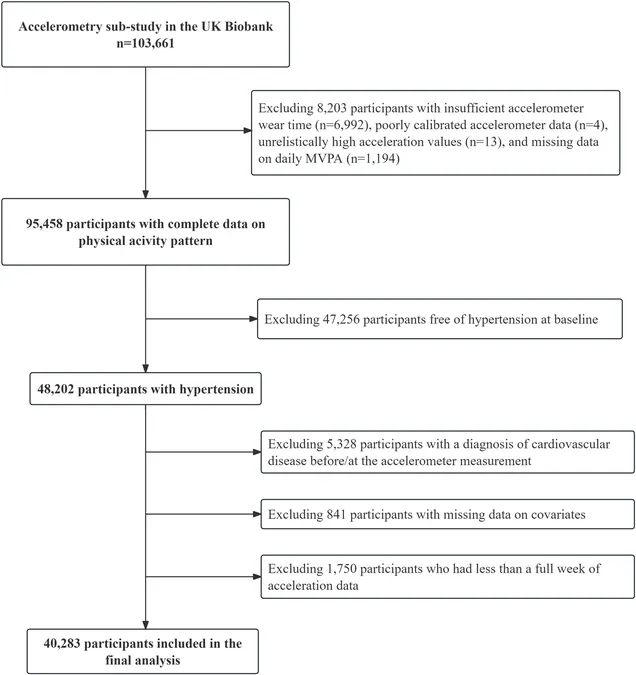
Unlocking Cardiovascular Health: The Surprising Benefits of Being a 'Weekend Warrior'
2025-08-29
Author: Sarah
Hypertension’s Growing Challenge
Hypertension affects over 1.3 billion adults worldwide and remains a leading contributor to cardiovascular disease (CVD) and mortality. Despite advancements in treatment, CVD-related complications still weigh heavily on this population, resulting in over 10 million deaths attributed to hypertension in 2021 alone. With such dire implications, it is crucial to identify practical ways to combat this health crisis.
Discovering the Power of Physical Activity
Recent studies highlight the critical role of physical activity (PA) in managing blood pressure and reducing CVD risk in hypertensive individuals. Engaging in moderate-to-vigorous physical activity (MVPA) has been shown to lower systolic and diastolic blood pressure significantly. While existing guidelines emphasize the total amount of MVPA, they often overlook the importance of how frequently this activity is performed.
The 'Weekend Warrior' Phenomenon
Research has introduced the 'weekend warrior' (WW) concept—individuals who pack their weekly exercise into just one or two days, as opposed to spreading it out consistently throughout the week. Surprisingly, studies suggest that this pattern can provide similar health benefits to those who maintain a regular exercise schedule. The challenge has been to determine whether these findings hold true for the hypertension population, which has largely been unexplored.
A Major Study Aims to Close the Knowledge Gap
To address these gaps, a cohort from the UK Biobank was utilized, featuring over 40,000 adults with monitored physical activity data. This extensive study aimed to clarify the relationship between different PA patterns—WW, regularly active, and inactive—and the risk of developing cardiovascular outcomes among individuals living with hypertension.
Diving into the Data: Understanding the Population
The study gathered comprehensive data on nearly 40,300 hypertensive individuals, utilizing accelerometers to measure their activity over a week. Participants were categorized based on their MVPA levels, identifying significant differences between those engaging in the WW pattern compared to their regularly active and inactive counterparts.
Startling Findings on CVD Risk
Following nearly 7.6 years of monitoring, results revealed that both the WW and regularly active groups enjoyed a drastically lowered risk of CVD compared to inactive individuals. This discovery underscores the potential for the WW pattern to serve as an effective strategy for hypertensive patients who struggle to integrate regular exercise into their busy lives. Notably, the risk reductions across various CVD types—myocardial infarction, heart failure, and stroke—were similar in both active groups.
Implications for Public Health and Clinical Practice
The findings carry significant implications for public health initiatives and clinical recommendations. By promoting the WW pattern, healthcare providers can offer a more attainable route towards achieving recommended physical activity levels, reducing CVD risks among hypertensive patients. Furthermore, as many individuals lead hectic lifestyles, encouraging exercise on weekends could enhance adherence to PA guidelines.
Towards a Healthier Future
This study shines a light on a feasible solution for managing hypertension and improving cardiovascular health. By restructuring our understanding of exercise paradigms, it emphasizes that whether activity is spread out across the week or concentrated into weekends, every little bit helps in the fight against cardiovascular disease. With targeted interventions promoting these patterns, the path to healthier hearts becomes more accessible.



 Brasil (PT)
Brasil (PT)
 Canada (EN)
Canada (EN)
 Chile (ES)
Chile (ES)
 Česko (CS)
Česko (CS)
 대한민국 (KO)
대한민국 (KO)
 España (ES)
España (ES)
 France (FR)
France (FR)
 Hong Kong (EN)
Hong Kong (EN)
 Italia (IT)
Italia (IT)
 日本 (JA)
日本 (JA)
 Magyarország (HU)
Magyarország (HU)
 Norge (NO)
Norge (NO)
 Polska (PL)
Polska (PL)
 Schweiz (DE)
Schweiz (DE)
 Singapore (EN)
Singapore (EN)
 Sverige (SV)
Sverige (SV)
 Suomi (FI)
Suomi (FI)
 Türkiye (TR)
Türkiye (TR)
 الإمارات العربية المتحدة (AR)
الإمارات العربية المتحدة (AR)